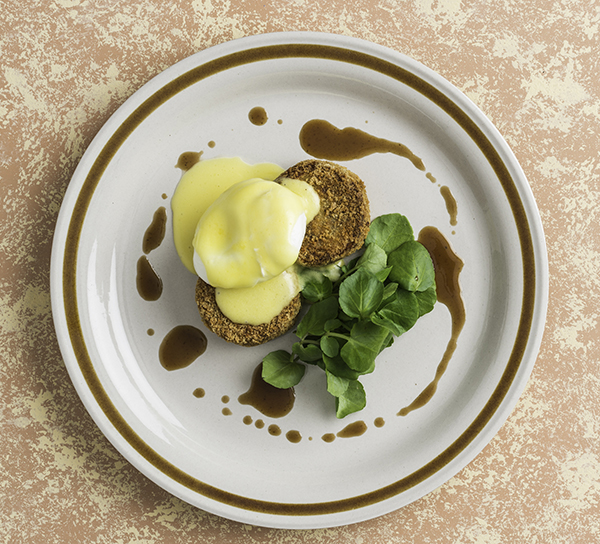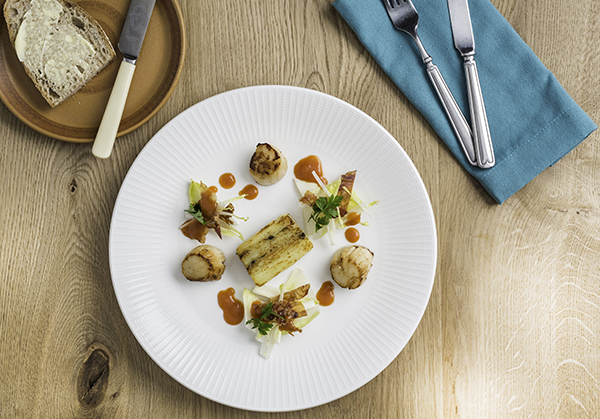Home-grown harvest: potatoes
The ultimate all-rounder is happy on any menu, whether as a bowl of perfect, crisp chips or as a decadent pomme purée. Russell Brown reports
Sir Francis Drake, Sir Walter Raleigh and Thomas Harriot are all names associated with the introduction of the potato to the British Isles from Virginia in 1586.
Raleigh was supposed to have introduced the tuber to England, and he first planted them on his estate near Cork, but another theory is that they were washed up on the Irish shoreline from the wreckage of the Spanish Armada.
By the early 1800s potatoes had become the mainstay food of the poor and successive years of blight-ridden crops from 1845 to 1849 had a devastating impact, known as the Great Famine in Ireland. At one point the disease was said to be spreading across the country at a rate of 80km a week. About a million people died in the famine and a million more emigrated. One famous chef of the time, Alexis Soyer, played a part in the response to the famine, developing recipes and setting up soup kitchens intended to feed the poor.
Once a potato crop is infected with blight, little can be done to save it and the crop can be ruined in a matter of 10 days. Blight-resistant varieties are now available, but much is down to good management and preventative applications of fungicide. New strains of blight are, however, increasing, and exhibiting resistance to some fungicides. The Agriculture and Horticulture Development Board runs a campaign against blight, called Fight Against Blight, highlighting how serious a problem the disease still is.
Maincrop potatoes are harvested in the UK between August and late October, with cold storage providing supply almost year-round. There are approximately 500 varieties of potato, but only about 80 are grown commercially, with just a handful being readily available. Even across my cooking career, varieties that used to be common are now seldom seen and new varieties have taken their place.
Potatoes fall into two main types: waxy and floury, but there are a number of âall-rounders'. Floury potatoes give light and fluffy results and are best for chips, roasting and mashing. The more waxy potatoes hold together better and are good for terrines, gratins or fondants. This is, needless to say, only a guide, and
the late Joël Robuchon's famous pomme purée uses Ratte potatoes, which are very waxy. It is the sheer quantity of milk and butter, along with specific technique, that makes the dish work so well.
There is a huge amount of science behind all cooking and good mash is no exception. Rupturing the granules in a potato can lead to âfree starch' and gluey mash. A blog post from Modernist Cuisine has reported a method using an enzyme called diastase in the form of diastatic malt powder to reduce the starch content in a purée by converting some of it to sugar.
For the chef, potatoes offer a truly huge number of options, from the seemingly simple side of perfect chips to a dish that celebrates the potato itself. Bjørn Moen at Pattard Kitchen in Hartland, North Devon, serves a simple potato espuma with truffle as an amuse-bouche, while Richard Johns at Rascills restaurant in Thirsk, North Yorkshire, is a fan of the Maris Piper for roasting and the Potato Lovers brand for chips. And Mark Hartstone from La Fosse at Cranborne in Dorset smokes Maris Pipers over almond wood for a deeply flavoured leek and potato soup.
Market report
Prices are only going one way, unfortunately. Because of the cold weather at the start of 2018 and the hot, dry summer the same year, there will be a huge shortage of potatoes in 2019. Potato size will also decrease, and we've even been told that baker size of 40's and even 50's will be non-existent.
Washed potatoes 40p per kilo
Maris Pipers 55p per kilo
Bakers sizes
40's - 30p each
50's - 25p each
60's - 20p each
Ashley Clemence www.totalproducelocal.co.uk
Buying and storage tips
â- Potatoes should be hard and free from wrinkling.
â- Avoid potatoes that are sprouting or have green patches.
â- Potatoes should be kept in a cool, dark place in paper or perforated plastic bags.
â- If storage is too cold, the starch will convert to sugar, so aim for 7°C-13°C, as this mimics soil temperature.
â- Potatoes should be dry when stored.
Potato and duck confit cakes with poached egg and hollandaise
Serves four
For the potato cakes
2 cooked confit duck legs, meat only
400g floury potato, such as Maris Piper (or an all-rounder, such as Rooster) cooked in their skins, peeled and roughly crushed
1tbs flat-leaf parsley, chopped
5g grain mustard
Duck fat to taste
Maldon sea salt and freshly ground black pepper
For the panné
100g seasoned flour
1 large free-range egg, beaten with 2tbs milk and strained
75g breadcrumbs
To serve
4 poached eggs
1 small bunch watercress
200ml hollandaise sauce
30ml concentrated duck jus
For the potato cakes, roughly chop the duck meat and mix with the potato, parsley and mustard. Add melted duck fat to taste and season well.
Using sheets of clingfilm, form into a cylinder approximately 7cm in diameter. Chill to firm up before slicing into eight slices and coating in the flour, egg and breadcrumb.
To serve, shallow-fry the potato cakes until golden, crisp and hot all the way through. Place two potato cakes on a plate, top with a warm poached egg and garnish with watercress. Spoon over the hollandaise sauce and finish with a little duck jus.
Potato, caper and shallot terrine, seared scallops, chicory and pancetta
Serves four
For the terrine
20ml olive oil
4 shallots, finely diced
25g unsalted butter
250g slightly waxy potatoes such as Marfona, thinly sliced
1tbs capers, chopped
Maldon sea salt and freshly ground black pepper
For the scallops
12 scallops without roes
25ml olive oil
Maldon sea salt and freshly ground black pepper
To serve
1 head of yellow chicory
4 thin rashers of pancetta, cooked until crisp
50ml tomato vinaigrette
To make the terrine, sweat the shallots gently in the oil with a pinch of salt. Once completely tender, add the capers and adjust the seasoning.
Melt the butter and toss the sliced potato through it, covering all the slices. Line a small mould, approximately 12cm x 7cm x 4cm, with clingfilm, leaving plenty of excess film around the edge. Lay potato slices into the mould, cutting some in half to keep the layers even. You want three layers of potato with shallots and capers in between. Season each layer well as you build them up. Draw the clingfilm up over the top of the mould and tuck down the sides to encase the filling.
Place the terrine in a vacuum pouch and seal on full pressure. Either steam the terrine or cook in a water bath at 90°C for 75-90 minutes until tender. Press and chill the terrine to set.
To serve, fry 1.5cm-thick slices of the terrine in a mix of butter and oil to colour both sides. Allow to warm through by the side of the stove. Season the scallops and sear for 45 seconds on each side before draining on paper towel. Place the terrine in the centre of the plate with the scallops around the outside. Garnish with the leaves and crispy pancetta, and drizzle over some tomato vinaigrette.
Coming up Over the next few months I will be featuring salsify and spinach in Home-grown Harvest. Do let me know how you use these products on your menus and what your seasonal favourites are. Email recipes, dish suggestions and photographs to russell@creativeaboutcuisine.com





















